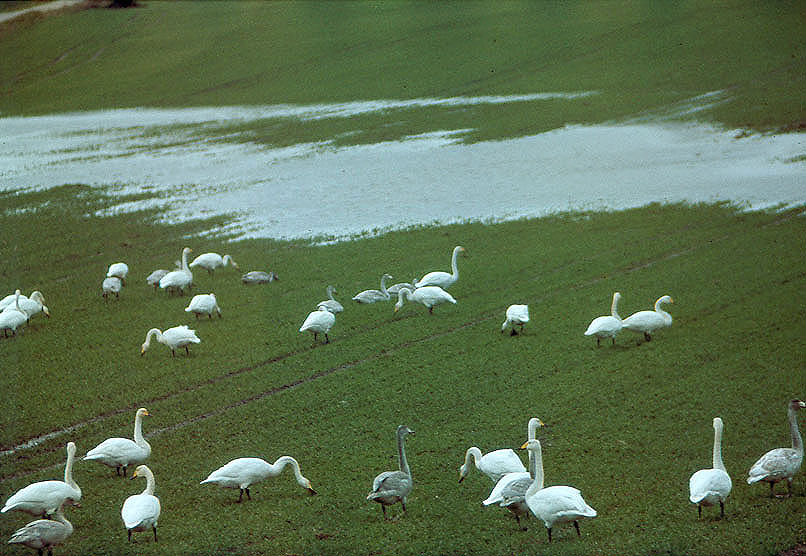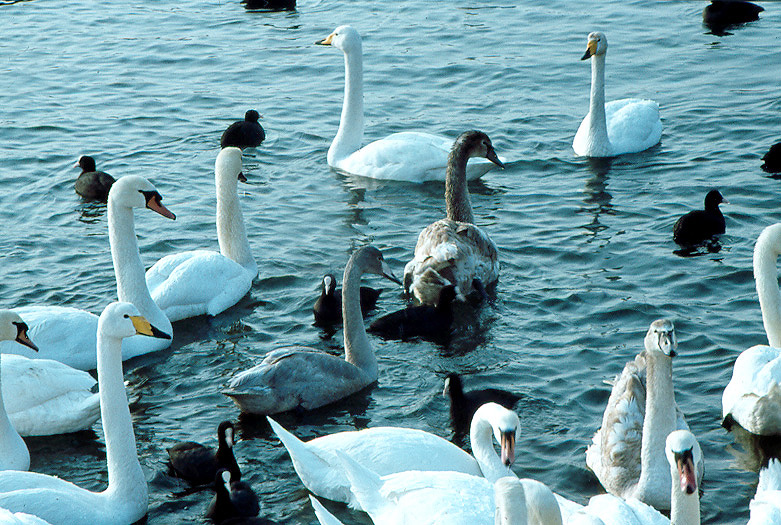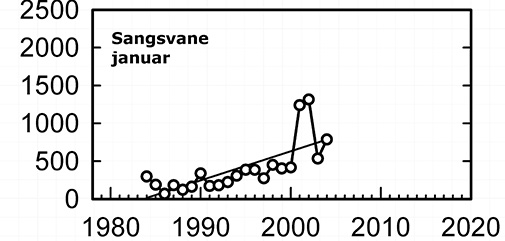Whooper Swan
(Cygnus cygnus).
Whooper Swans on the ice.
The first Whooper Swans arrive on the fjord in November but their numbers do not increase much until Swedish waters are frozen over in December. At the end of March they leave the fjord again to migrate to their breeding grounds in northern Finland and north western Russia.
The Whooper Swan population on the fjord has been increasing for many years. This is mainly because the farmers have changed from spring- to winter crops, which has given the swans good foraging in fields of rape and wheat when ice renders aquatic plants inaccessible. Whooper Swans often forage on land in company with Canada Geese, and the local Mute Swans also often follow the Whooper Swans out into the fields. On the fjord Whooper Swans frequent openings in the ice e.g. between Jyllinge and Lilleø.
.

Whooper Swans foraging near Gundsø.
Other places where you might come fairly close to Whooper Swans include Ølvig on Bognæs, the area around Herslev, the fields across from Margretheskolen in Gundsømagle and the area around Selsø. In winter they can be seen all over the fjord and the surrounding countryside. Their characteristic call can help to locate them.

Young and adult Mute- and Whooper Swans.
Close up, Whooper Swans can be distinguished from Mute Swans by their yellow beaks – the Mute Swans’ beaks being red. Whooper Swan cygnets are blue-grey, whilst Mute Swan cygnets are brownish. From a distance the clearest difference is that the Whooper Swan’s tail points backwards or downwards, and the Mute Swan’s tail turns upwards.
Whooper Swan - population trends

Whooper Swan January.
